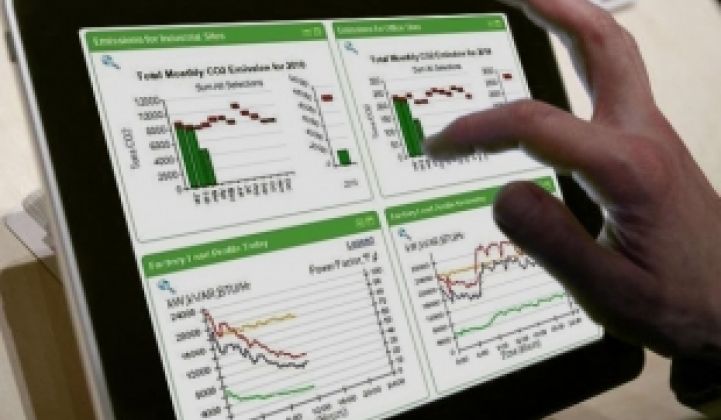However, some believe this rush is creating a dashboard bubble that is ready to pop.
Using dashboards to track energy use is nothing new. But customization and granularity have improved dramatically, making offerings far more attractive. It’s also an extremely low-cost way to get into the market. This has brought more entrepreneurs from the tech world into the energy efficiency business, creating a dizzying array of options for customers looking to monitor and reduce their energy use.
Last year, we posted a thought-provoking series on why many energy dashboard companies are doomed for failure. Without understanding the energy market or customer needs, many of these energy dashboard companies simply have a slick-looking product that doesn't actually translate into action at a facility or residence. Because there are so many firms now offering these tools, the need to branch out beyond simply having a dashboard for its own sake is crucial.
“The coolest dashboard in the world won’t save one BTU of energy if somebody doesn’t grab a wrench and fix the equipment, adjust an operating schedule or take action to improve the infrastructure,” says Clay Nesler, vice president of global energy and sustainability at Johnson Controls.
While very bullish on information tools like dashboards, many of the big companies with deep technical expertise in the efficiency sector are skeptical of some of the companies offering these products. Many of them are tech startups with no background in building management or energy. Without an effective technology or service offering that spurs action, more information won’t do any good -- no matter how engaging the platform.
“There are few barriers to entry in the software area. It’s not that difficult to create these software programs quickly. What’s difficult is finding a channel to the market and helping companies actually take action,” says Nesler. “A better interface doesn’t necessarily save energy.”
In other words, if you are simply developing a dashboard because you think it's cool, you're probably in the wrong market.
Nearly every major building controls vendor has a cloud-based energy-monitoring platform; Honeywell, Johnson Controls, Schneider Electric and Siemens are the main players with offerings. These companies have deep business channels and can offer the software as part of a full-service building management solution. But this also highlights the question of whether they are as good at software as the tech startups now beginning to flood the market.
“Most of the large companies have very vibrant R&D labs, understand the value chain, understand how buildings work, and have integrated that into their software. Innovation is happening across the spectrum. It’s not just with the small guys,” says Nesler. (Interestingly, Johnson Controls has opened its platform up to outside developers creating new apps, some of them startups.)
With anyone able to get into the space at low cost, there’s a lot of innovation happening in dashboards. But even the software startups don’t think energy management dashboards are the end-all solution.
“Dashboards are not a big market. It’s like fighting over a banana peel in the backyard. The goal is to create markets and unlock this enormous revenue opportunity. It’s a means to an end,” says Scott Harmon of Noesis Energy.
The target audience for dashboards is also changing. Initially, these tools were used for marketing basic energy information to customers in a retail store or students in a school hallway. That's an easier market for a tech startup to penetration. Now they’ve moved up to facilities managers, who use them for operational purposes. Dashboards are also increasingly being implemented at the executive level in order to illustrate energy use and spur action on a broader company level.
In response to the shifting needs in the market, companies developing dashboards are building different widgets and interfaces that focus on different types of decision-makers. But most importantly, the platforms that will likely succeed aren't stand-alone products -- they're the platforms integrated into a broader package of energy savings measures.
While the market for dashboards may be getting saturated, it doesn’t make web-based energy visualization tools any less important. The need to display information in a clear, engaging format is pressing. The big unknown is how many of the startups can find a market channel, prove they can add value and compete with well-established companies.
If we truly are entering a dashboard bubble, when will it pop?
This article is an adaptation from a chapter in our new report, "Intelligent Efficiency: Innovations Reshaping the Energy Efficiency Market." To download that free report and learn more about how companies are deploying IT in the efficiency sector, click here. And make sure to listen to our latest podcast fleshing out the subject, which features interviews with leading players in the space.



